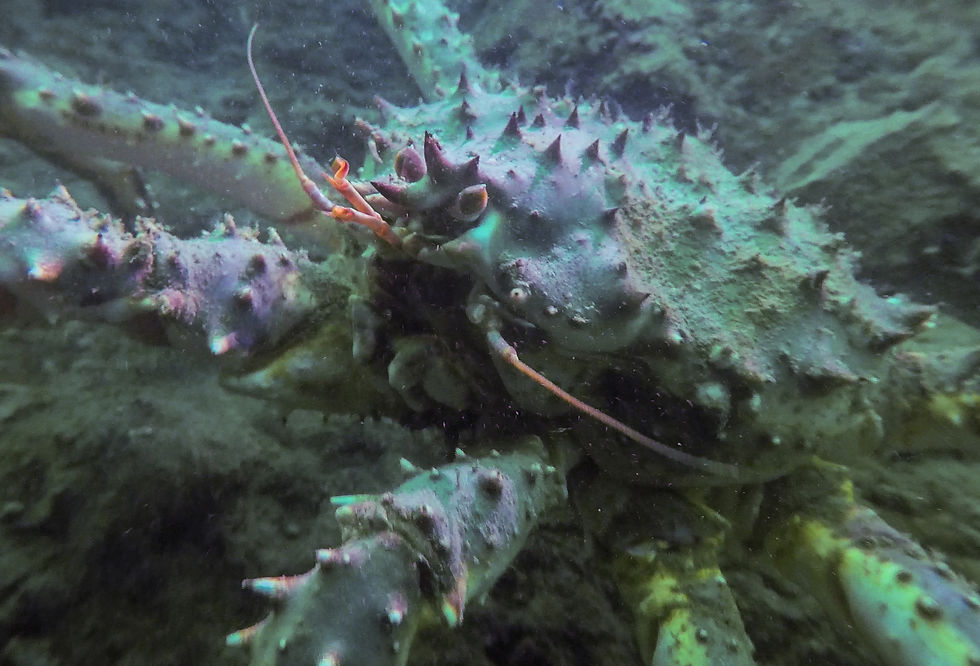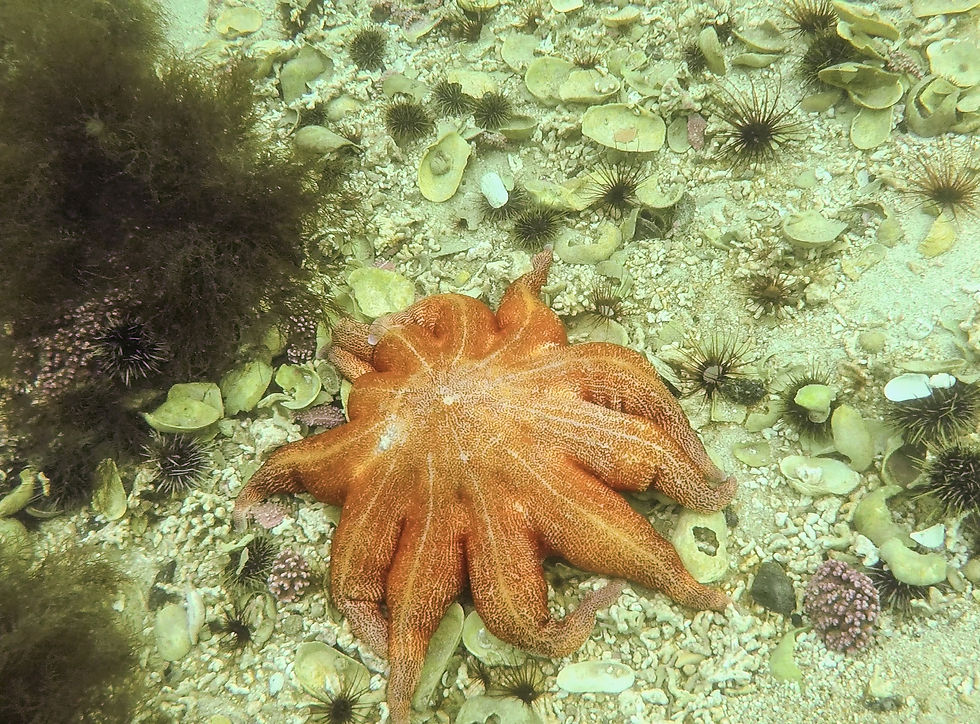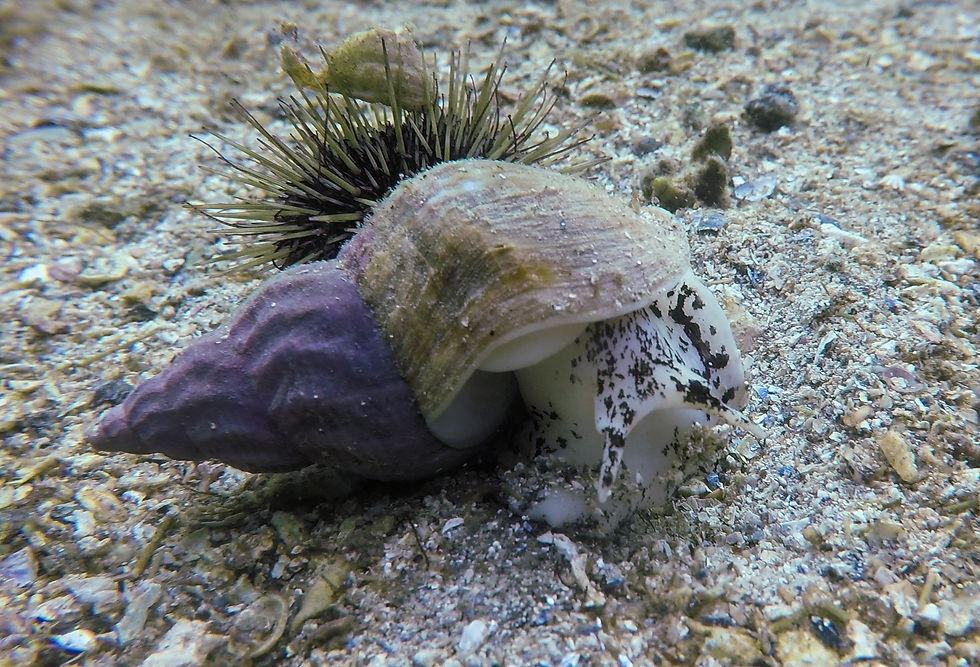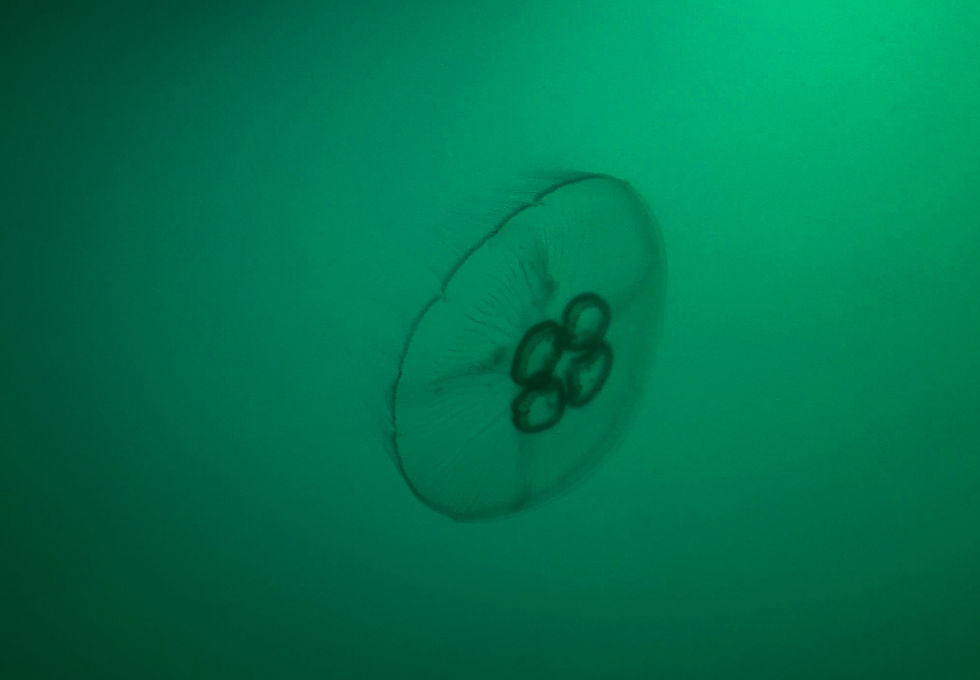Finnmark, Norway
August 2018
Situated in the northernmost part of the European continent, close to the Russian border, it is not very populated and, aside from Nordkapp, seldomly visited even by Norwegians due to its remoteness. You encounter more reindeers than cars on the roads. It has a very different landscape than the rest of Norway and is cool in its own way.

This summer we went on a road trip around Finnamark. We set off from Oslo and drove the >2000km to reach the Barents Sea. We drove north-east through Sweden and Finland and reached Kirkeness. It is a very depressing gray town with a feeling of desolation close to the Russian border. From there we visited Grensen Jacobsen and the Pasvik valley where you can hike right next to the border. There are a few wrecks right in Kirkenes but we did not manage to dive them.
There is very little information on diving in the area. I had contacted one diving school in Kongsfjord a couple of years back but they had moved to Malta. The owner had also told me that diving around there wasn’t very interesting as a lot had been over fished leaving space for the massive king crabs to take over the sea bed.
We had the Barents Sea in our bucket list since our trip to the White Sea where one of the divers had told us how massive the octopus, crabs and sea cucumbers in the Barents Sea are. We had then decided to one day go visit that Sea whose name starts with a B somewhere in the North which surrounds Russia. A year later we got a bit confused and ended up in Kamchatka to dive the Bering Sea. But now, older and wiser we were off to the Barents Sea.


I tried contacting a couple of local clubs but they were all around the more Western part of Finnmark and only one club replied, suggesting I contact the other clubs. So as we were driving we kept our eyes peeled for possible dive sites. Our first dive was in Kongsfjord, where the diving school used to be. When we reached the hamlet I asked at the local supermarket if they knew any divers or where divers used to dive. There I got a vague description to go up the road a bit as somewhere there they used to dive back in the days. We ended up in a small, shallow, sandy bay. It didn’t look particularly interesting but it had already been a week since we left home and we still hadn’t dived, so we decided to jump into the Barents Sea. The dive was surprisingly interesting: a lot of the rocks were covered in pink corals and there were giant sea cucumbers! But no king crabs to be seen.
There facing the bay there is a small crafts shop. Which turned out to be run by an Italian couple. He welcomed us in Norwegian and after a couple of signs which unmistakably placed him as Italian I suggested we speak Italian instead of Norwegian. He said he thought we weren’t Norwegians because our jackets were not the usual brand that Norwegians would wear but we were wearing the typical hat that all Norwegians - and only Norwegians, wear outdoors. Both of us had forgotten our wooly hats so we each picked up an appalling one at the local shop.

on Husøy island.


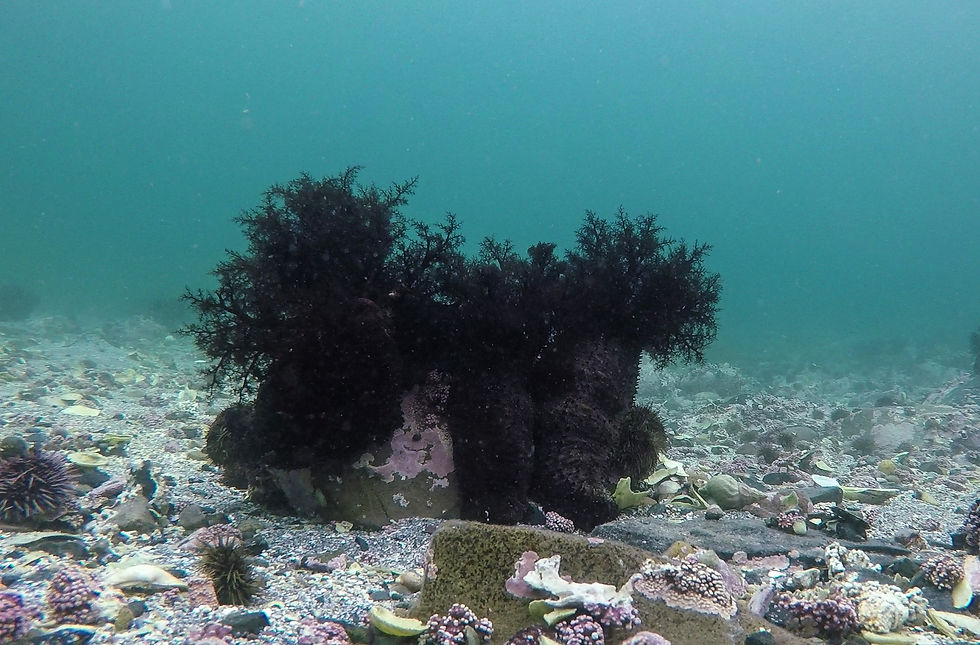
and massive sea cucumbers
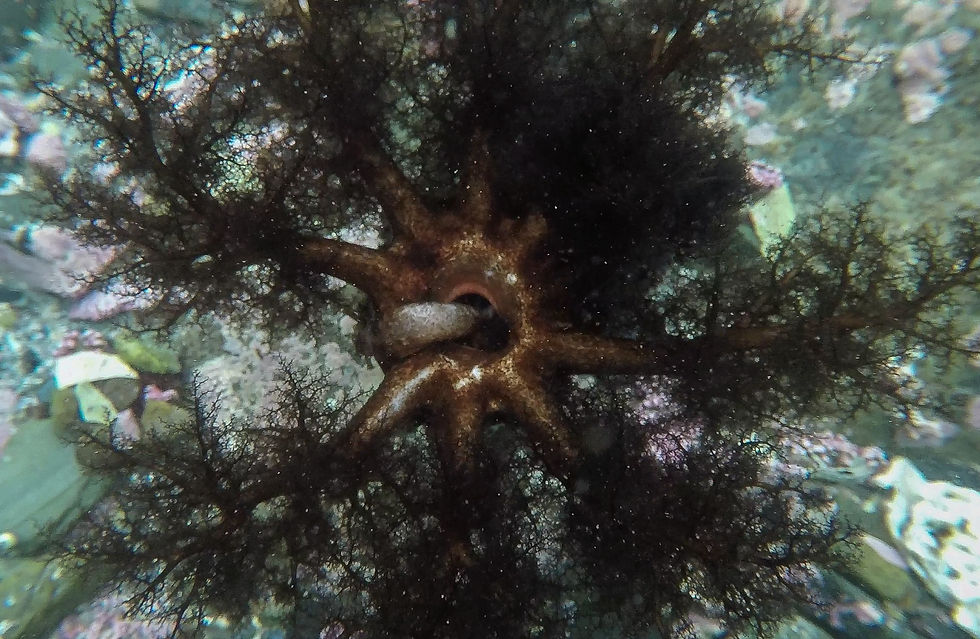
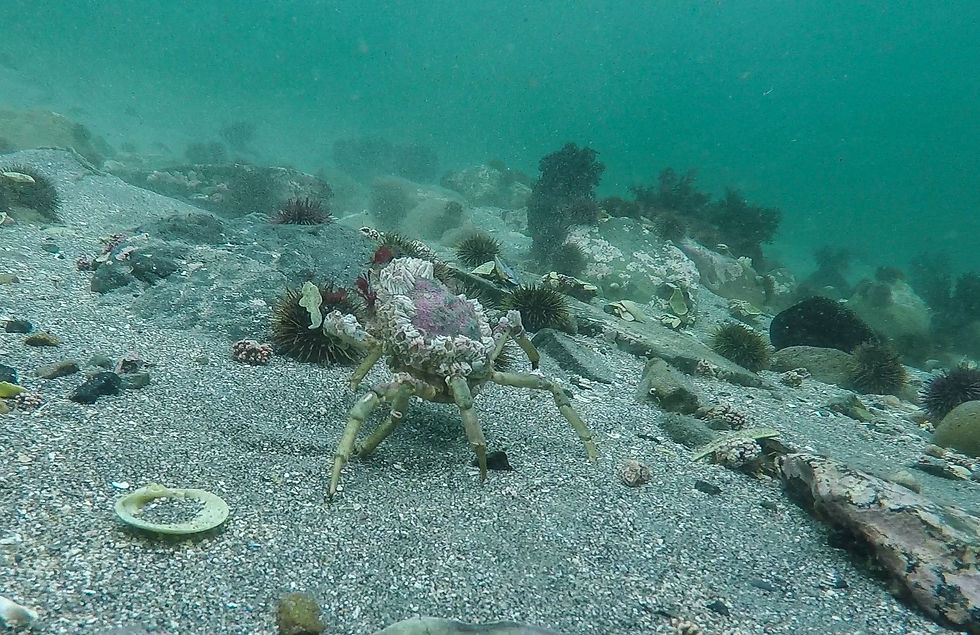
although tiny.
Then we set off to the place in Finnmark which attracts lots of tourists: Nordkapp. There it was time for another box-ticking exercise. Dive Nordkapp! Nordkapp per se is a massive, flashy construction with a view on the Barents Sea. However, it is at the top of a cliff so not diveable. There is then the “true” northernmost part of the continent which is about 2 meters more north then the constructions which you drive to but it involves a 10km hike. So not the most practical place to go diving. We settled for Skarsvåg as the closest driveable sea access to Nordkapp. There is a small albeit busy marina. So I went on a mission to find a quieter place to dive. I saw a girl next to a house with a pontoon and a couple of boats moored and asked if they knew where I could dive from and if they knew of any diving spots. She was very friendly and said I could use their pontoon. They run fishing trips and have accommodation for tourists. Then she pointed me to a man who used to dive. He told me that towards the entrance of the marina there is said to be a wreck but no one knows for sure and in the opposite direction there are often halibuts swimming about. I decided to jump in and search for the halibuts but I got distracted by the number of massive snails crawling about. I found a dead halibut serving as a feast to sea urchins, snails, starfish, crabs. I didn’t see any live halibut and the king crabs were still elusive.
Norwegians have a handy diving resource with descriptions of dive sites. There I found some information about a wreck from World War II which you could dive from the shore. So our third dive was the wreck of the Argus in Hamnbukt. The vessel was a large German cargo boat carrying ammunition. As they were unloading a fire was discovered. The captain of the boat wanted to evacuate the ship and take it to deeper waters to sink it, however the Major who was meant to receive the cargo wanted to salvage it and extinguish the fire. It is said that the last thing people saw was that the Captain and the Major stood on the bridge of the Argus with their pistols facing each other when the ship exploded. The explosion was massive: the flame column was several hundred meters high and stories recall bits of human bodies crushed by the pressure everywhere, they even had to scrape remains of the soldiers down the sides of the mountains, bodies often without heads or limbs, floated in the sea for days. The sea was also covered with dead mackerel which were kill by the shock wave and some oil also flowed from the seabed. The exact number of casualties is unknown but some sources say a couple of hundred people lost their lives that day. Also as to the source of the fire, some suspect that it was an act of sabotage.
You can read the details here but the website is in Norwegian however Google Translate does have a wild imagination and adds shark assistants and drug traffickers to the story).

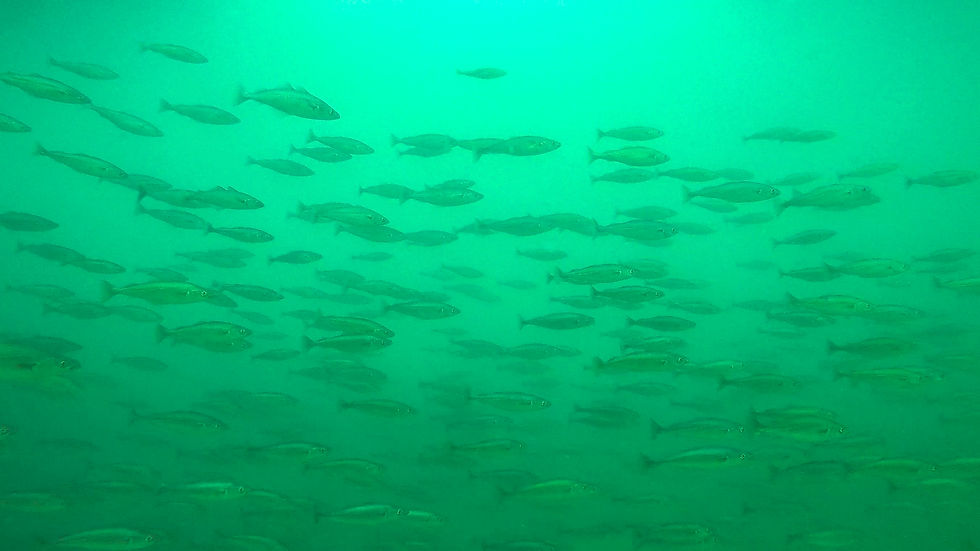



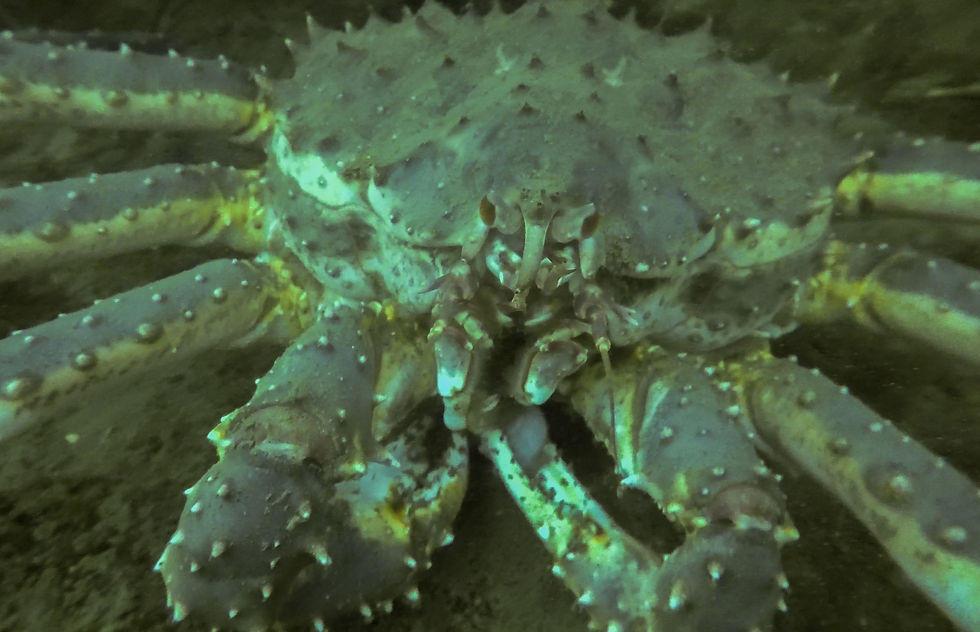
The dive is very exciting. The wreck lies at about 18m. Obviously, the superstructure is not intact but there are stil rather large fragments where you can swim through and explore. There are plumose anemones growing on it and the nooks and crannies make perfect hiding spots for the king crabs! Finally we say them! So massive and so many!
And these were our dives in Finnmark! But we then continued West to Senja.








